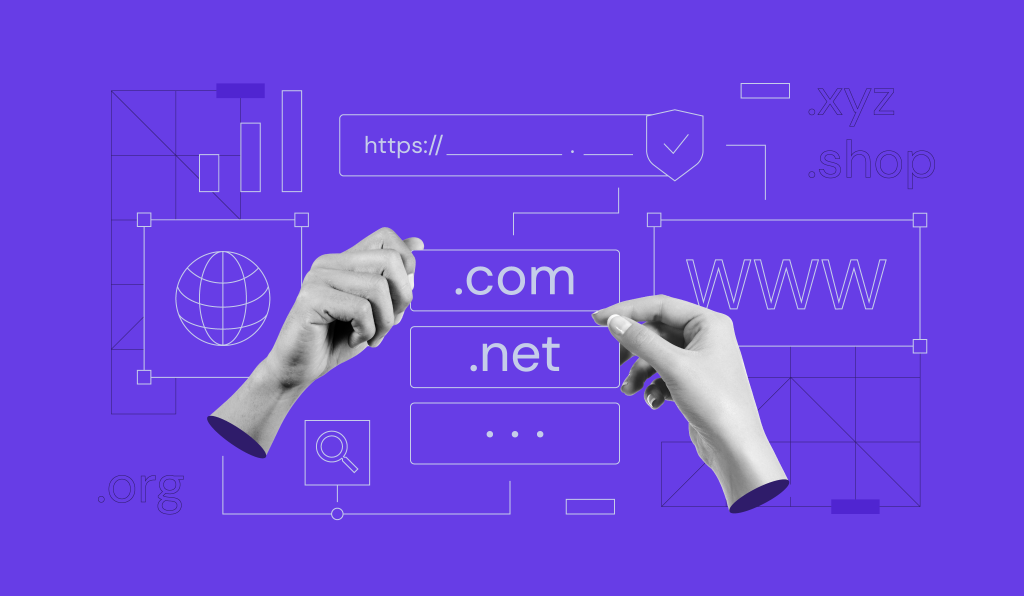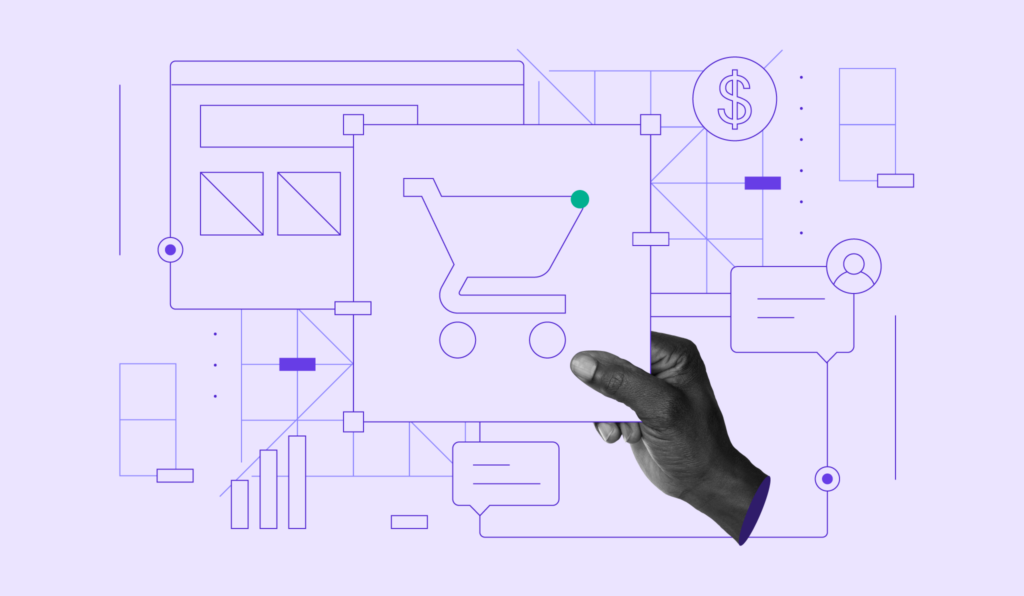Landing page vs. homepage: what’s the difference?

The key difference between a landing page and a homepage lies in their purpose: a landing page is designed with a single, specific goal, such as capturing leads or promoting a campaign, while a homepage serves as the main entry point to a website, offering broad navigation opportunities.
Simply put, your homepage introduces your brand and guides visitors to explore different areas of your site, while a landing page is laser-focused on conversion.
Mixing them up can water down your message, lower conversion rates, and confuse visitors.
In this article, we’ll break down the core functions of landing pages and homepages, highlight their key differences, and show you when and how to use each one effectively.
Key differences between a landing page and a website
A landing page is a single, standalone web page designed to drive a specific action, such as signing up for a newsletter or purchasing a product, typically as part of a marketing campaign.
A website, on the other hand, is a multi-page experience that introduces your brand, provides detailed information, and encourages users to explore multiple areas.
In short, a landing page is built for focus and conversion, while a website is built for discovery and engagement.
Here’s a side-by-side comparison of the key differences:
| Aspect | Landing page | Website |
| Purpose and goal | Drive a single, focused action | Support multiple goals |
| Structure | Single-page experience with minimal distractions | Multi-page experience with a broader structure |
| Navigation | Little to no navigation | Full navigation menus |
| Traffic sources | Typically from targeted campaigns | Organic search, branded queries, referrals, and direct visits |
| Content scope | Highly focused on a single offer or message | Covers your brand, products/services, blog, contact info, and more |
| Call to action (CTA) | One clear CTA without competing links | Multiple CTAs matched with different stages of the buyer’s journey |
| Design and layout | Clean, minimal, and optimized for conversions | Designed for usability, branding, and diverse content |
| User journey role | Serves a specific step in a funnel (usually the entry point or decision stage) | Supports the entire user journey from awareness to decision and beyond |
| Metrics | Measured by conversion rate and campaign-specific goals | Measured by engagement metrics and overall site behavior |
Key characteristics of a landing page
A successful landing page is a carefully crafted tool built to drive a single, specific outcome.
Whether it is used to collect leads, promote an offer, or drive sales, the elements of a landing page all serve one purpose, and that is conversion.
Here are the six essential characteristics that define a high-performing landing page:
1. Singular goal and message
Every element of your landing page should work together to guide users toward one clear outcome. The goal should be clear, with one message that supports the action you want users to take.
2. Clear, actionable CTA
The CTA is the centerpiece of your landing page. It should be visually prominent, easy to understand, and persuasive enough to make users click it.
A well-designed CTA should be actionable and engaging. So instead of just writing “Submit” or “Download”, use phrases like “Sign me up” or “Start my free trial.”
3. Minimal navigation
Most landing pages remove standard website navigation to keep users focused on the main goal and prevent them from wandering off before completing the intended action.
4. Targeted, persuasive copy
The copy should speak directly to your audience’s needs or pain points, then offer a solution.
It’s usually concise, benefit-driven, and crafted to build trust quickly. Bullet points, short paragraphs, and value-driven headlines are commonly used.
5. Visually clean design
Good landing pages use whitespace strategically, avoid clutter, and highlight the CTA.
Layouts are designed to draw the eye naturally toward the conversion point using contrast, directional cues (like arrows), or visual hierarchy.
6. Trust builders
People are more likely to convert if they feel confident in what they’re getting.
Trust elements like customer reviews, case studies, money-back guarantees, or security badges can remove hesitation and increase credibility.
Depending on what the goal is, we can differentiate between the following types of landing pages:
Lead generation pages
The purpose of a lead generation landing page is to collect user data in exchange for something valuable (like a guide or discount).

As we can see in the image above, National Sewing Circle uses a lead generation page to offer downloadable sewing patterns in exchange for visitors’ email addresses.
The design is minimal, featuring a simple sign-up form paired with a bright, attention-grabbing CTA.
Click-through pages
A click-through landing page serves to warm up users before directing them to a purchase or sign-up.
It doesn’t ask for conversions directly on the page but acts as a bridge in the sales funnel.
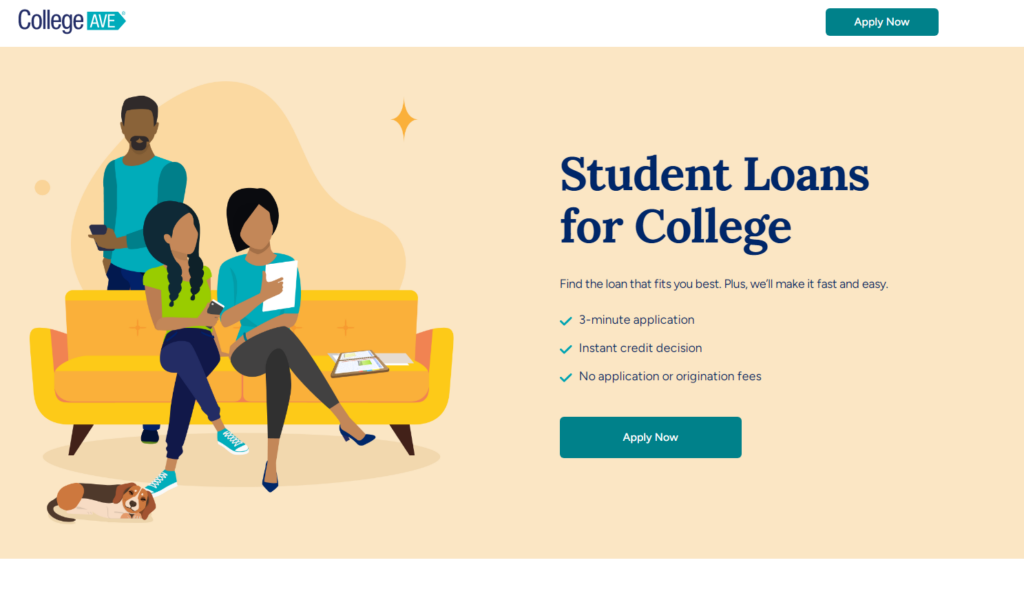
The example above shows the College Ave undergraduate loans landing page, which presents the loan offer, highlights key benefits, and features a strong call to action that guides visitors to click through to start their application on a separate page.
Sales pages
Sales landing pages are created to drive direct purchases with longer, persuasive content.
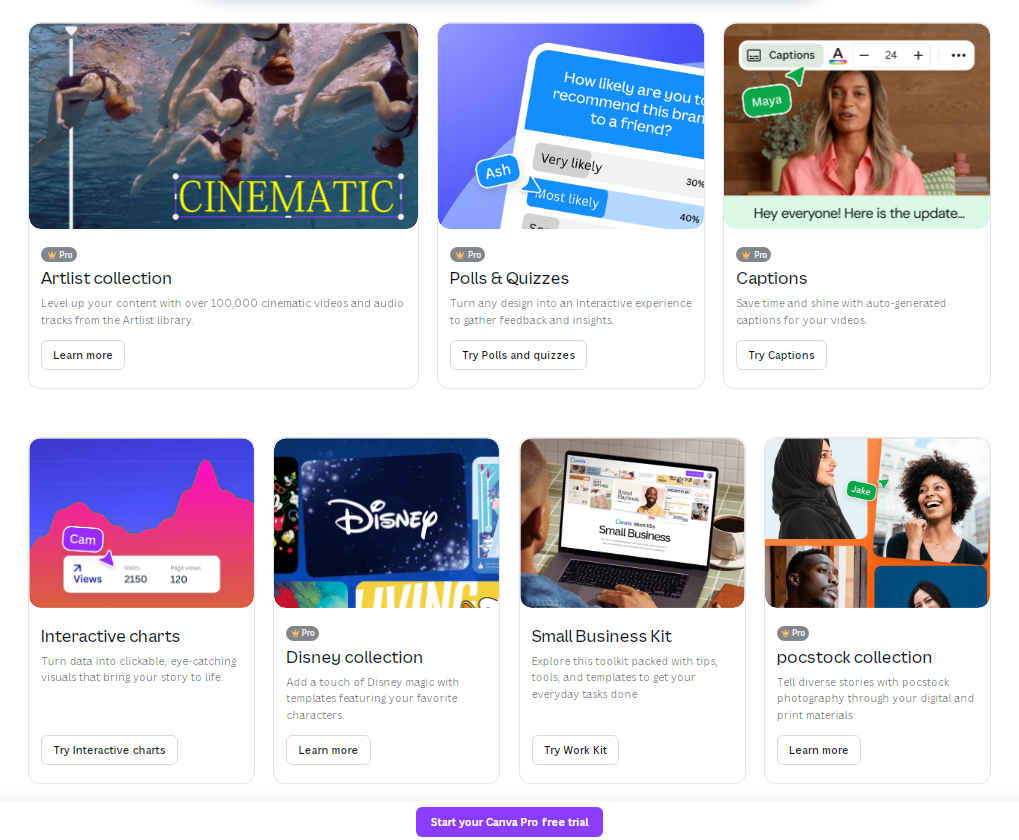
Canva Pro’s page does this effectively by highlighting premium features and clear benefits, paired with strong, strategically placed CTAs that encourage visitors to try out Canva Pro for free, learn more, or upgrade their plan.
The focused design showcases why upgrading matters, making it easy for users to take action.
Squeeze pages
Squeeze landing pages are ultra-minimal pages focused solely on email capture. While they are very similar to lead generation pages, they differ in depth and intent.
Lead generation pages often include more context, visuals, or benefits to nurture interest.
Squeeze pages, on the other hand, are like a pop-up in full-screen. Everything is stripped down to a single, high-impact offer with the only goal of collecting an email address, quickly and efficiently.
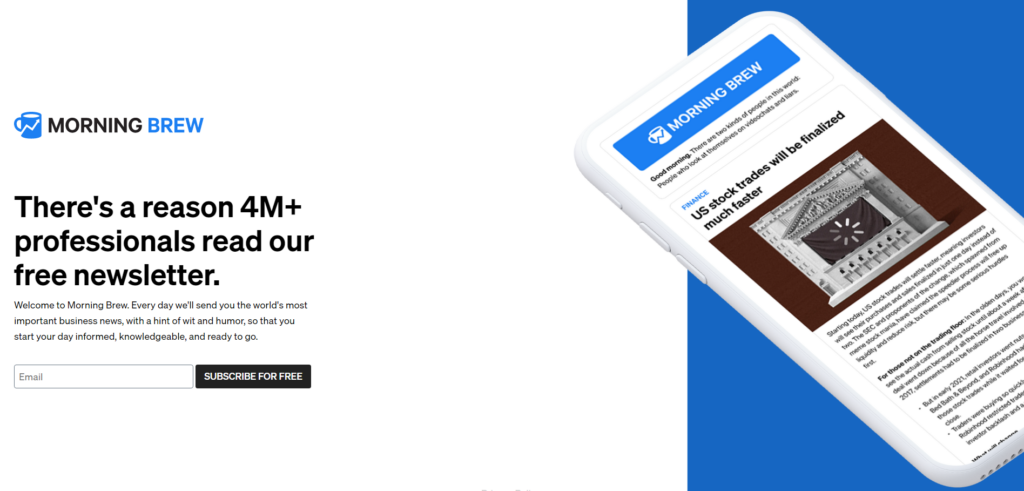
The KlientBoost squeeze page is a perfect example. It features a single, focused offer and a short sign-up form that’s immediately visible when the page loads, without the need to scroll.
A clean layout, bold CTA, and strong headline work together to push visitors toward one simple action: submitting their email.
When to use a landing page?
Landing pages are most effective when used with targeted marketing efforts.
Below are example scenarios where landing pages fit naturally:
PPC and paid ad campaigns
Whether it’s Google Ads, Facebook Ads, or LinkedIn campaigns, a dedicated landing page that matches an ad’s message can dramatically improve conversion rates.
Let’s say you’re running Google Ads for a free trial of your SaaS product.
Instead of sending visitors to your homepage where they can get distracted by too many options, you direct them to a dedicated landing page that highlights your trial offer with a clear, prominently placed form.
According to our landing page statistics, keeping things focused pays off as shorter landing pages with clear CTAs outperform longer ones by 13.5%, making it even more important to streamline your message and make the next step clear and intuitive.
Pro tip
Match the ad copy with the landing page headline to boost relevance and quality scores.
Email marketing campaigns
While emails are great at generating clicks, they’re limited in space. A dedicated landing page picks up where the email leaves off and pushes the reader toward conversion.
For example, if you’re running a limited-time promotion via email, linking to a landing page that reinforces the offer, builds urgency, and includes a standout CTA like “Buy now” or “Sign up today” can turn clicks into conversions.
Keep in mind that personalized CTAs convert 42% more visitors than generic ones, so make sure to align your landing page’s CTA to your audience’s specific needs, interests, or stage in the buyer journey.
Product launches or announcements
When unveiling a new product or service, a landing page can help control the story and guide visitors toward one specific action, like signing up for early access, pre-ordering, or learning more.
It keeps the excitement focused and eliminates unnecessary detours.
Take a mobile app launch, for instance. Creating a landing page featuring teaser visuals and a short demo video would build excitement, provide a quick taste of the product, and capture high-intent leads who are eager to be among the first to try it out.
Pro tip
Embedding a short product video can increase conversions by up to 86%, so take the time to create a quick demo or teaser.
Seasonal or time-sensitive promotions
Limited-time offers call for urgency, not clutter. A landing page helps zero in on the deal and drive faster decisions, especially during high-traffic shopping seasons like Black Friday or holidays.
For instance, if you’re running a limited-time Black Friday promotion, a landing page that features your best deals, includes countdown timers, and provides direct checkout buttons can create urgency and drive immediate action.
By eliminating distractions and reducing friction, you improve your chances of converting time-sensitive traffic.
Pro tip
Design for mobile first, as 83% of landing page visits happen on mobile devices.
Key characteristics of a homepage
Every website starts with a homepage, which sets the stage for how visitors perceive and interact with your brand online.
To build an effective homepage that guides users, communicates your brand, and encourages exploration, it helps to understand its essential characteristics, such as:
- Comprehensive navigation – Central navigation hub with clear menus, search functionality, and links to all major site sections.
- Broad information overview – A wide-angle view of the products, services, or content categories to quickly inform first-time visitors.
- Brand identity and messaging – Displays your logo, brand colors, and core messaging to communicate your unique value and personality.
- Multiple conversion opportunities – Features varied calls to action, such as newsletter signups, product browsing, or resource downloads, to serve different visitor goals.
- User experience and site exploration – Highlights key content and uses a clear, balanced website layout to encourage deeper exploration.
- Trust and social proof elements – Includes testimonials, client logos, certifications, or awards to establish credibility and build visitor confidence.
When to use a homepage?
Homepages are best used in the following scenarios:
- Building brand awareness and discovery campaigns. Use a homepage to introduce your brand during broad awareness efforts like display ads, social media campaigns, or PR.
- Driving direct and organic traffic. Welcome visitors arriving from direct URL entry, branded searches, or word-of-mouth with a broad overview.
- Offering multiple products or services. When your business has a variety of products or services, the homepage lets visitors explore and find what fits them best.
- Nurturing long-term relationships. Use your homepage to engage visitors not ready to buy, letting them explore and build trust through newsletters or content.
- Supporting SEO and content marketing. Use it as the foundation for organic search, serving as a key destination that builds authority across broad keywords and topics.
- Orienting first-time visitors. For visitors from referrals, partnerships, or industry searches, your homepage offers a clear, welcoming overview of who you are and what you offer.
Emerging trends in landing page and homepage design
As digital competition heats up, landing page and homepage design are evolving rapidly, blending creativity with cutting-edge technology to capture visitor attention and boost conversions.
Looking ahead, several emerging trends are shaping the future of web design, centered on personalization, engagement, and accessibility.
AI-powered personalization and testing
In 2025, approximately 30% of companies will use AI for smarter A/B testing.
AI is automating the creation of multiple landing page variations by adjusting headlines, images, and calls to action based on user data.
It then analyzes how visitors interact with each version of the web page by tracking clicks, scroll depth, and time spent to identify which elements drive better engagement.
Finally, it provides detailed reports highlighting the most effective combinations and recommends next steps for conversion optimization.
Interactive elements and dynamic content
High-converting landing pages are increasingly incorporating interactive features like quizzes, sliders, and calculators that engage visitors directly.
Dynamic content, such as personalized product recommendations or location-based offers, is adapting in real-time to user data, making each visit feel unique and relevant.
Video backgrounds and demo content
Video will remain a powerful tool for engaging visitors and telling your brand’s story.
Short demo clips or subtle video backgrounds are allowing users to quickly understand a product’s benefits while making the page more visually appealing.
Videos showcase real use cases, demonstrate features, and create emotional connections that static images can’t, making them essential for modern landing pages.
Mobile-first design
Mobile-first design continues to dominate, as over 54% of global web traffic comes from mobile devices.
Prioritizing fast load times, intuitive navigation, and smooth checkout on smaller screens will remain a must for capturing on-the-go users and staying competitive.
Accessibility and inclusive design
Accessibility and inclusive design are becoming standard expectations for modern landing pages.
Features like clear fonts, keyboard navigation, screen reader support, and strong color contrast are becoming the norm in web design.
Social proof and real-time support
Social proof continues to dominate landing page strategies, with 36% of top pages showcasing testimonials, client logos, and ratings to boost credibility.
Meanwhile, live chat integration is on the rise, driving a 20% increase in sales by providing instant answers that ease buyer hesitation.
In today’s on-demand digital world, real-time support is quickly becoming a must-have for converting visitors.
Do you need both a landing page and a homepage?
Yes, in most cases, businesses need both a landing page and a homepage as part of their digital strategy.
Each serves a distinct but complementary purpose that, when combined, creates a more effective online presence.
Landing pages are designed for focused conversion. They target specific campaigns, products, or promotions with clear calls to action, helping visitors complete desired actions quickly and efficiently.
It’s best to use them for time-sensitive offers, paid advertising, or any situation where you want to drive a single, measurable outcome.
On the other hand, homepages provide a broad overview of your brand and offerings.
If you want to see an alternative type of introductory page, check out our guide on what a splash page is and how it differs from a homepage or landing page.
They support brand awareness, site exploration, and multiple visitor goals.
A homepage helps new visitors understand who you are, navigate your site, and engage with various content at their own pace.
Together, these pages balance targeted conversion with comprehensive branding, which makes them essential for most businesses aiming to grow and connect with their audience effectively. What’s more, both types can be created quickly and effortlessly if you have the right website building tool.
Landing page vs homepage – FAQ
What are the 3 main differences between a website and a landing page?
A website is a multi-page platform offering broad information, navigation, and various user paths. A landing page is a single, focused page designed for a specific campaign or action. Websites support exploration; landing pages drive targeted conversions with minimal distractions.
Is a landing page the same as a home page?
No, a landing page and a homepage serve different purposes. A homepage provides a broad overview of a brand and guides visitors to explore the site. On the other hand, a landing page is focused on a single goal or offer, designed to prompt immediate action like signing up or purchasing.
Do I need a landing page if I have a website?
Yes, landing pages complement websites by focusing on specific campaigns or offers.
While your website builds brand awareness and provides general information, landing pages help convert visitors quickly and efficiently, improving the effectiveness of marketing efforts and driving measurable results.
All of the tutorial content on this website is subject to Hostinger's rigorous editorial standards and values.


